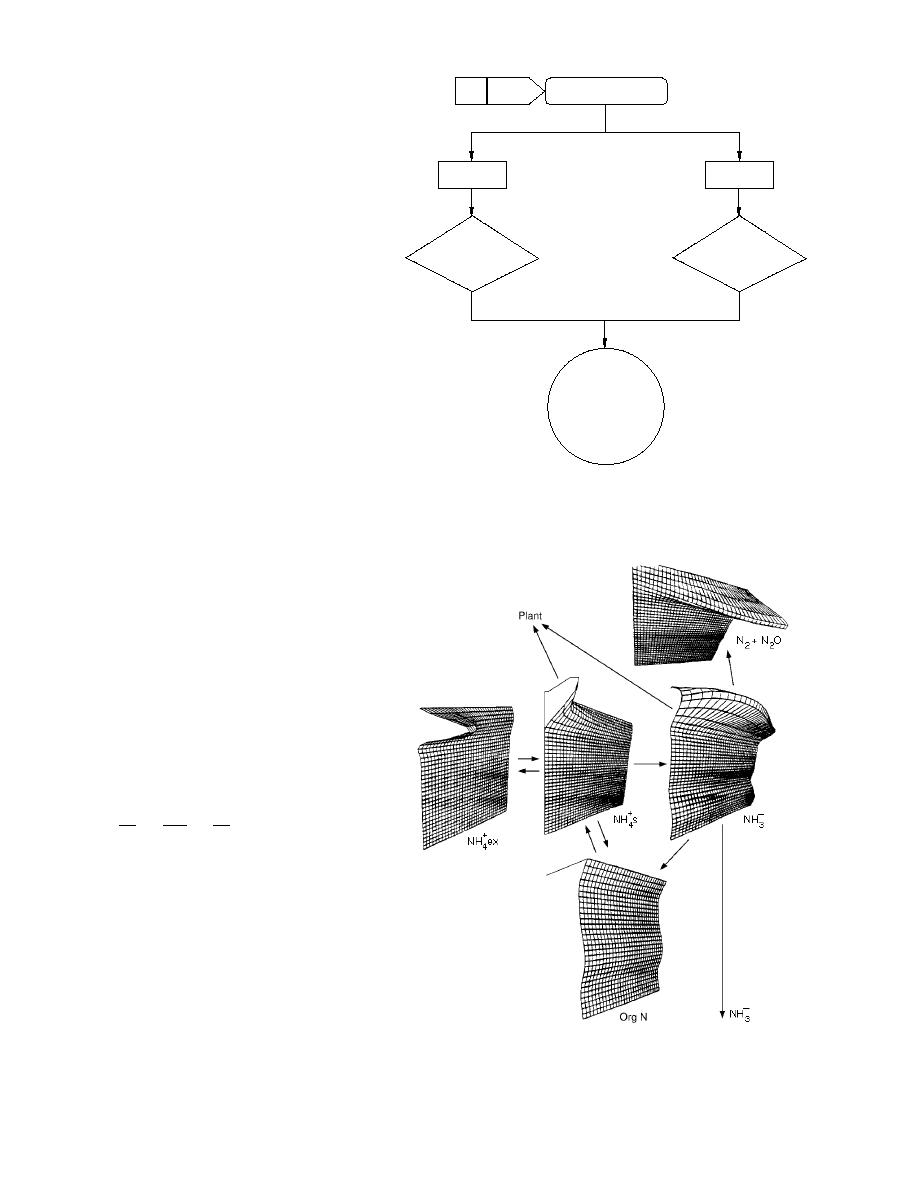
formations addressed include nitrification
Initial soil water
Water
Input
and nitrogen distribution
nitrogen
of ammonium to nitrate, ammonium ex-
change on soil, and denitrification. Organic
matter mineralization and immobilization
are not specifically addressed by WASTEN,
Nitrogen
Water
although control can be asserted through
submodel
submodel
the nitrogen transformation rate constants.
The relationships among these nitrogen
forms and interacting processes are shown
Soil water
in Figure 1.
N-Transformations
Plant uptake
N-Plant uptake
WASTEN includes a water transport
Infiltration fluxes
N-Transport
submodel that is linked with a nitrogen
submodel (Fig. 2). This linkage allows
WASTEN to be used for steady-state and
transient flow conditions, and it predicts
water content and water flux throughout
the soil profile and allows for upwards
Water content
flow due to evapotranspiration.
Concentation of
N species
The nitrogen submodel of WASTEN is
Plant uptake
built around the convectivedispersive
with time
and soil depth
transport equation, which couples the
equation for continuity of mass with Fick's
second law of diffusion. The resulting
Figure 2. Simplified nitrogen model showing the water and nitro-
equation accounts for transport by diffu-
gen submodels. (After Selim and Iskandar 1980.)
sion, hydrodynamic dispersion and mass
flow. For each nitrogen form treated by WASTEN,
one analogous equation is developed (Fig. 3). Ad-
ditionally, transformation processes are added onto
each equation as source or sink terms. In use,
WASTEN solves the resulting series of coupled equa-
tions by a modified, CrankNicolson, explicitim-
plicit finite-difference method. Integrated within the
model is a water transport model that provides
moisture content and flux at each node.
2C
C
C
=D 2 -V
+ sour4s - sinks - plant uptake
14ce244
3
t 123 1 3
2z
z
4
Dispersion + Mass Flow Microbial
1444 24444
4
3
Transport
Transformations
C = concentration
t = time
z = depth
V = average pore water velocity
Figure 3. Interaction of nitrogen species and idealized model solution.
3



 Previous Page
Previous Page
